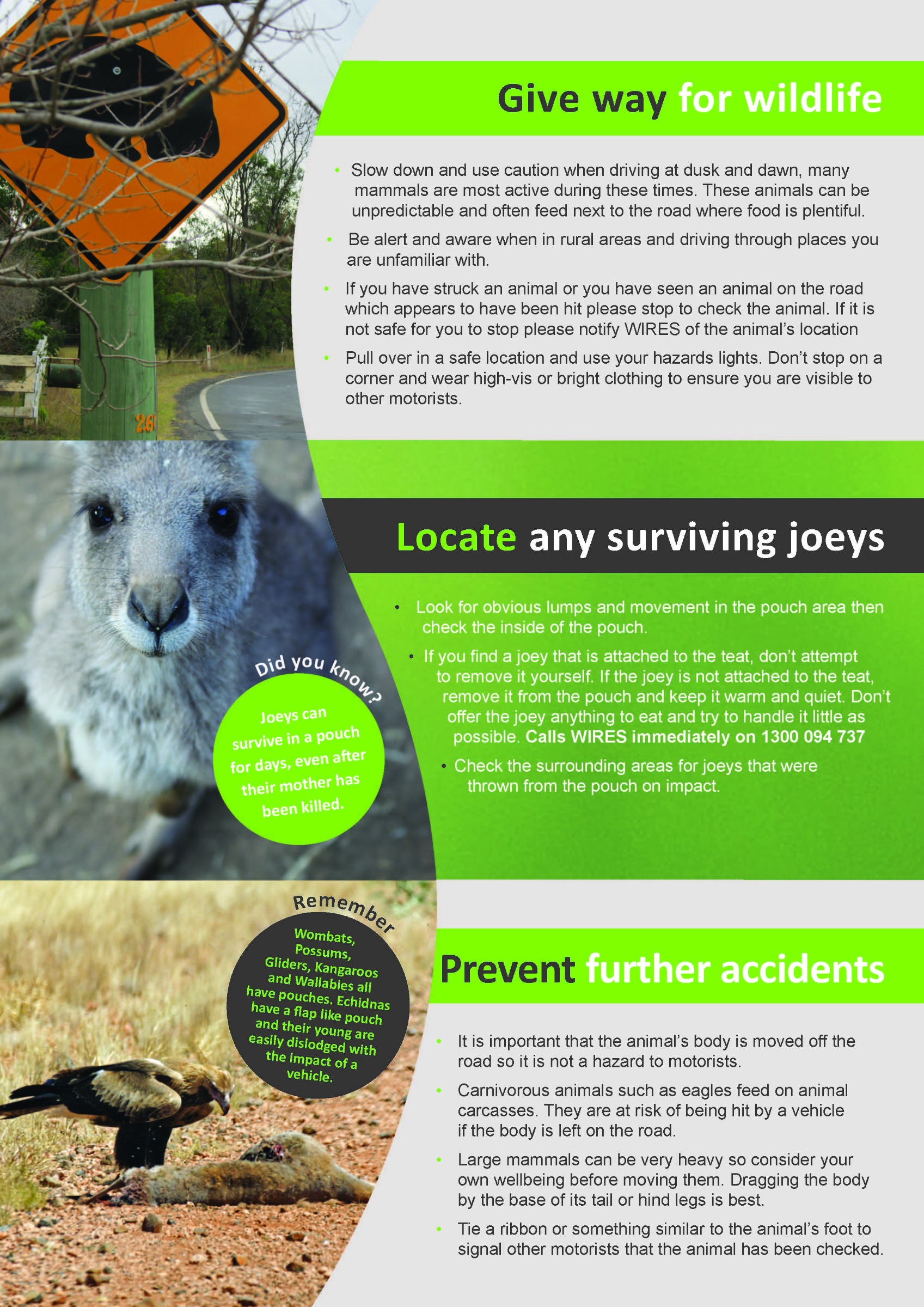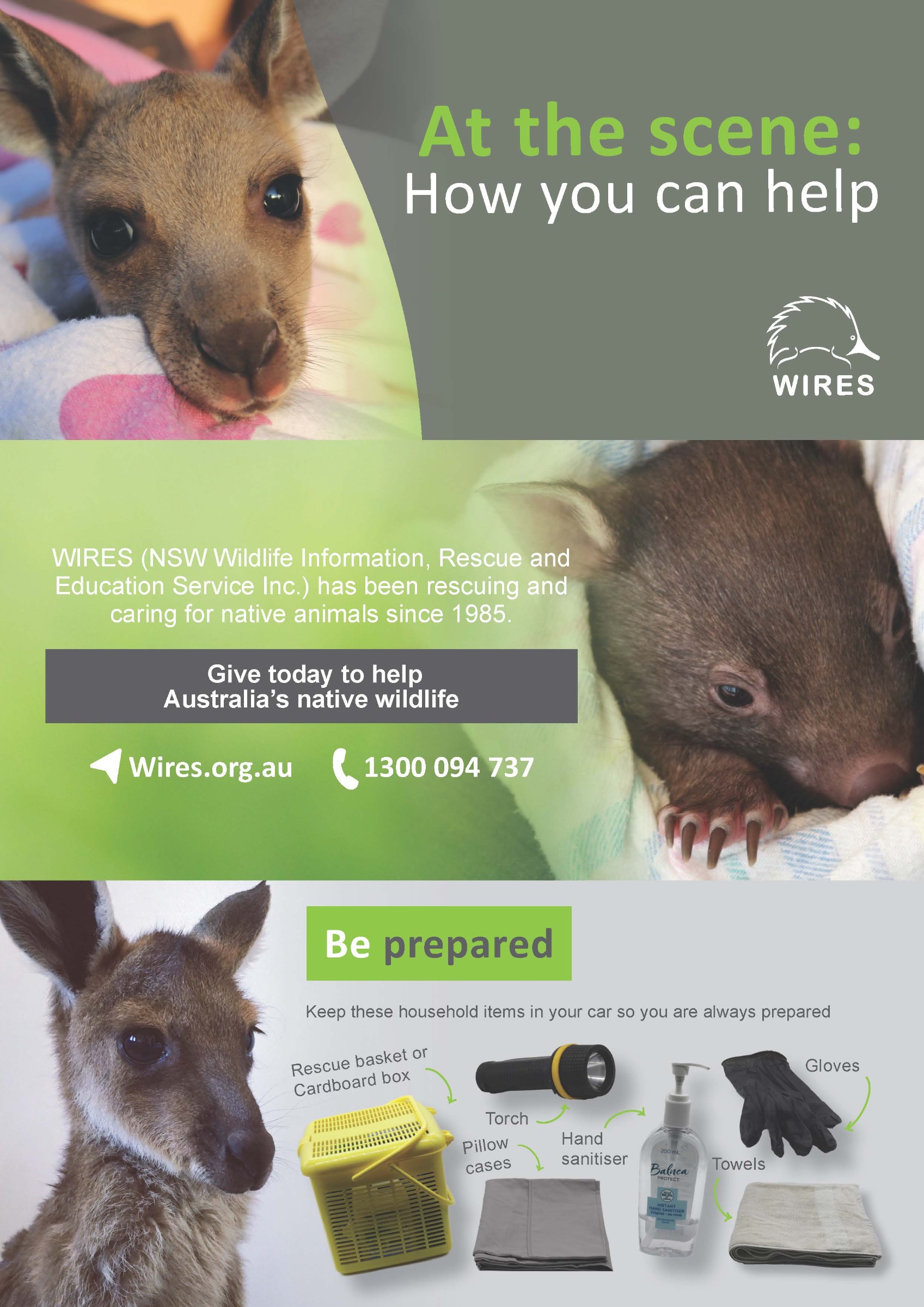Injured Wildlife
Helping injured wildlife - Who to call
WIRES Emergency Advice
If you find a sick, injured or orphaned native animal, call a wildlife rescue organisation straight away. Improper rescue can hurt or distress the animal and the rescuer. It is critical to get sick and injured wildlife vet treatment as quickly as possible. You should call the Wildlife Information, Rescue and Education Service (WIRES) on the emergency hotline 13 000 WIRES. It is available 24 hours a day, seven days a week.
When reporting rescues to WIRES and vets, please try to confirm the EXACT location you found the animal. This is because many native animals are very territorial, so it's critical that, when they are ready for release, they are returned "home" to ensure their best chance of survival.
In addition, if WIRES know the exact location the animal was found, many young animals have a better chance of being reunited with their parents.
Wildlife Rescue Australia
Wildlife Rescue Australia, a not-for-profit, voluntary organisation operates an Australia-wide, 24/7 Call Centre.
The Centre is staffed by professional operators trained to facilitate the rescue of sick, injured or orphaned native animals.
WRA answers over 99% of calls with an answering time less than 25 seconds.
This service is available to members of the public, as well as native animal groups, veterinary clinics, local Councils, Police etc.
Phone No.: 1300 596 457
Website: https://wildliferescue.net.au/
Certain animals should NOT be approached
If you encounter a sick, injured or orphaned animal on the list below, call a wildlife rescue organisation straight away. These animals require specialist handling and MUST be rescued by trained wildlife rescuers.
- Snakes
- Monitor Lizards (Goannas)
- Bats (Flying-Foxes or Microbats)
- Large Macropods (Kangaroos or Wallabies)
- Raptors (Eagles, Falcons, or Hawks)
What to do while you wait
After calling a wildlife rescue organisation you can:
1) Remove any threat to the animal
This includes keeping all people and pets away from the native animal, to minimise stress to the animal for vet transport or until a rescuer arrives.
2) If it is safe to do so, contain the animal in a warm, dark, quiet place
For example, gently wrap the animal in a towel and place it in a ventilated box with a lid, cover the box or container with a towel, and transport it carefully to the nearest vet or wait for the rescuer to arrive. Handle the animal as little as possible to minimise stress.
3) Do not give the animal any food or water, unless instructed to by a vet or WIRES
Further Reading
www.wires.org.au and https://wildliferescue.net.au/
For more detailed information, please see the WIRES Emergency Advice Page or the Wildlife Road Awareness Page
For more information on specific species, please visit the Wildlife Information page.
WIRES has also developed a free online community course called An Introduction to Australian Wildlife. This course has been designed for people of all ages as an easy introduction to Australian wildlife for individuals and families who are unfamiliar with Australian native animals.
You may also like to download the WIRES Driver Brochure


